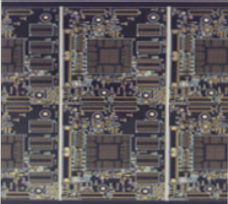1. The “packaging” step in the PCB manufacturing process is a crucial yet often undervalued stage, typically not part of the STEP process. The main reason for this is twofold: on one hand, it does not directly contribute to added value, and on the other, Taiwan’s manufacturing industry has not historically focused on product packaging. However, focusing on packaging can bring substantial benefits, which may not be immediately obvious. Japan excels in this area, particularly in the packaging of consumer goods. When we examine Japanese household appliances, daily necessities, and even food products, we see that the same functionality is often marketed in ways that make consumers more willing to pay a premium for Japanese-made products. This is not related to any specific cultural festivals but rather to how well packaging influences consumer behavior. Therefore, packaging is often considered as a standalone aspect of product design, encouraging PCB manufacturers to understand that even small improvements in packaging can lead to noticeable benefits.
For instance, a flexible PCB is typically small in size, and there are various packaging techniques in Japan designed specifically for such components. These methods are often optimized for the shape of the product, particularly the opening of the packaging, ensuring ease of use while providing effective protection for the PCB.

**2. Discussion on Early Packaging Methods**
Early packaging methods can be compared to outdated transport packaging techniques, which lacked sophistication. Some smaller factories still use these older methods. However, domestic PCB production capacity is expanding rapidly, with most output being exported, leading to fierce competition. This competition not only exists among local manufacturers but also with the two largest PCB manufacturers in the United States and Japan. Beyond the technical capabilities and product quality, which are crucial for customer recognition, packaging quality also plays a significant role in customer satisfaction.
Electronics factories are often small-scale operations, and PCB manufacturers are increasingly required to meet specific shipping and packaging standards. Several aspects must be carefully considered, with some customers even providing detailed transport packaging specifications. These include:
1. **Vacuum packaging requirements**
2. **Board quantity per iteration, constrained by size limitations**
3. **Tightness of overlapping PE film and specifications for remaining edge width**
4. **Specifications for PE film and foam material (bubble board)**
5. **Carton weight specifications**
6. **Requirements for placing buffers in front of the carton’s inner panel**
7. **Tolerance specifications after sealing**
8. **Weight limit per box**
Currently, domestic vacuum skin packaging is relatively standardized, with the main differences being in the effective working area and the degree of automation.
**3. Vacuum Sealed Packaging (Vacuum Skin Packaging)**
**Operating Procedures**
1. **Preparation**: Position the PE film and manually check the mechanical actions to ensure they are functioning properly. Set the PE film heating temperature, vacuum time, and other necessary parameters.
2. **Board Stacking**: Once the number of stacked boards is fixed, the height is also determined. At this point, careful consideration should be given to how the boards are stacked to optimize output and minimize material waste. The following principles should be followed:
– The distance between each stack of boards depends on the PE film specifications (thickness) and the standard of 0.2 mm. Utilizing the principle of heat-softened and stretched PE film, the vacuum suction will bond the coated board to the bubble cloth. The spacing between stacks is typically at least twice the total thickness of the stack. If the spacing is too large, material will be wasted; if too small, it will become difficult to cut, and the adhesive bond may fail or not form at all.
– The distance between the outermost board and the edge must be at least twice the thickness of the board.
For smaller panel sizes, following the above packaging method may result in material and labor wastage. However, for large quantities, containers similar to those used in soft board packaging can be molded, followed by PE film shrink wrapping. An alternative approach, subject to customer approval, may involve packing the boards tightly together with no gaps between stacks, using cardboard to separate them and including additional layers of hard paper or corrugated paper beneath the stacks.
3. **Start of Packaging Process**:
A. Press the start button, and the heated PE film will be lowered by the pressure frame to cover the table.
B. The vacuum pump at the bottom will then remove the air and secure the film to the circuit boards, adhering them to the bubble cloth.
C. Once the heater is removed, raise the outer frame to allow the packaging to cool.
D. After the PE film is cut, separate each stack by pulling the chassis apart.
4. **Packing**: If the customer specifies a particular packing method, it must be followed precisely. If no specific method is provided, the factory should establish its own packing specifications based on the principle of protecting the boards from external damage during transit. As mentioned earlier, particular attention must be paid to the packaging of exported products.
**2. Additional Precautions for PCB Packaging:**
1. Information that must be clearly marked on the outside of the box, including “oral wheat head,” part number (P/N), version, production date, quantity, and any other important details. The phrase “Made in Taiwan” should be included if the product is for export.
2. Include relevant quality certifications, such as slice data, solderability reports, test records, and any customer-required test reports. These should be placed according to the customer’s specifications.
Packaging is not a trivial task. Paying attention to detail during the process will prevent unnecessary problems and save a lot of hassle in the long run.



